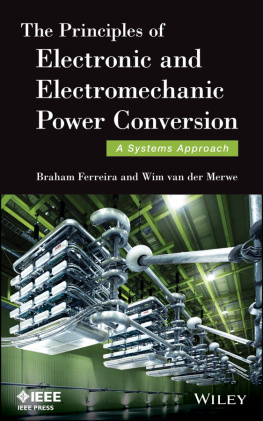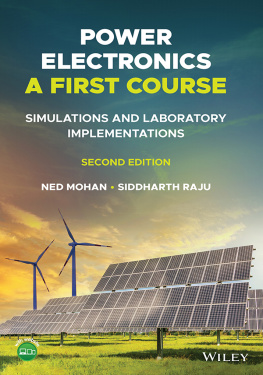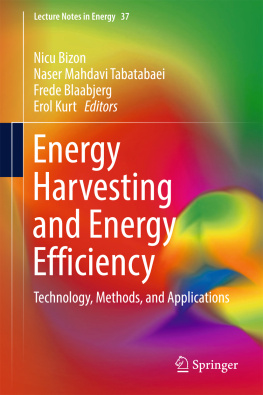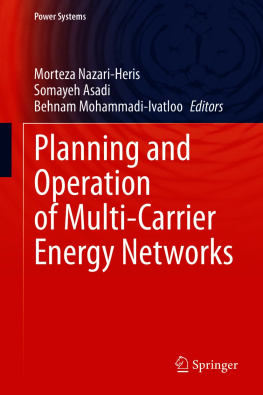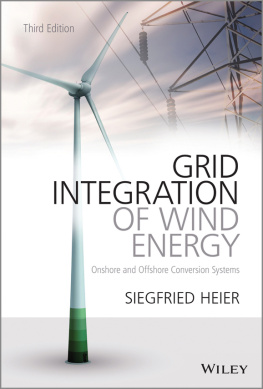
Copyright 2014 by John Wiley & Sons, Inc. All rights reserved
Published by John Wiley & Sons, Inc., Hoboken, New Jersey
Published simultaneously in Canada
No part of this publication may be reproduced, stored in a retrieval system, or transmitted in any form or by any means, electronic, mechanical, photocopying, recording, scanning, or otherwise, except as permitted under Section 107 or 108 of the 1976 United States Copyright Act, without either the prior written permission of the Publisher, or authorization through payment of the appropriate per-copy fee to the Copyright Clearance Center, Inc., 222 Rosewood Drive, Danvers, MA 01923, (978) 750-8400, fax (978) 750-4470, or on the web at www.copyright.com. Requests to the Publisher for permission should be addressed to the Permissions Department, John Wiley & Sons, Inc., 111 River Street, Hoboken, NJ 07030, (201) 748-6011, fax (201) 748-6008, or online at http://www.wiley.com/go/permission.
Limit of Liability/Disclaimer of Warranty: While the publisher and author have used their best efforts in preparing this book, they make no representations or warranties with respect to the accuracy or completeness of the contents of this book and specifically disclaim any implied warranties of merchantability or fitness for a particular purpose. No warranty may be created or extended by sales representatives or written sales materials. The advice and strategies contained herein may not be suitable for your situation. You should consult with a professional where appropriate. Neither the publisher nor author shall be liable for any loss of profit or any other commercial damages, including but not limited to special, incidental, consequential, or other damages.
For general information on our other products and services or for technical support, please contact our Customer Care Department within the United States at (800) 762-2974, outside the United States at (317) 572-3993 or fax (317) 572-4002.
Wiley also publishes its books in a variety of electronic formats. Some content that appears in print may not be available in electronic formats. For more information about Wiley products, visit our web site at www.wiley.com.
Library of Congress Cataloging-in-Publication Data:
Ferreira, Braham, 1958
The principles of electronic and electromechanic power conversion : a systems approach / Braham
Ferreira, Wim van der Merwe.
1 online resource.
Includes bibliographical references and index.
Description based on print version record and CIP data provided by publisher; resource not viewed.
ISBN 978-1-118-79884-3 ISBN 978-1-118-79885-0 (ePub) ISBN 978-1-118-65609-9 (cloth) 1. Power electronics. 2. Electric generators. I. Van der Merwe, Wim, 1977- II. Title.
TK7881.15
621.317dc23
2013029833
Preface
During the past forty years, electrical power conversion systems have evolved considerably. Some technologies have matured, while others have undergone substantial new development. Conversion systems have become more diverse and sophisticated, and feature complex architectures that have improved performance. Central and embedded controllers are now playing a prominent role in managing power flow. Power is applied to loads with high precision, and energy conversion efficiency is optimized at the same time. The volume of power conversion knowledge has increased, and the average electrical engineer deals increasingly with system aspects and less with component details.
The typical undergraduate student needs to study fundamentals as well as the various disciplines of electrical and electronics engineering during a three or four year study program. It is a full program, and it is not possible to introduce more course material in a power conversion course on system-related issues without condensing the content on components. In this book, we have strived to strike a new balance between systems and components in a one semester course that is intended for a bachelors undergraduate program. Alternatively, the book may be used as a self-study book on the principles of power conversion by a professional in science and engineering, who has sufficient mathematical background.
This textbook is a result of many discussions with colleagues. Our observation was that available undergraduate textbooks at this level follow a bottom-up approach that is forty years old. Issues such as magnetic circuits and dc machine field winding configurations receive a substantial amount of attention, while few modern engineers need this knowledge. Power electronics is frequently treated in a 1970s style, describing circuit topologies that are now being phased out and using old-fashioned power devices. In this book, a compact treatise on magnetic circuits is presented where the principles are introduced to gain a good qualitative understanding, leaving practical magnetic circuit analysis and design for follow-up courses. A modern simple approach to machines that makes the principles of field-oriented control and space vector theory approachable to undergraduate students is introduced. In power electronics, the focus is on topologies that use a series transistor and diode combination that is connected to a dc source because this has become a standard building block. The trend is that semiconductor switches are becoming ever better and, therefore, this treatise uses ideal switches.
A top-down approach is followed in this textbook, where the role and system context of power conversion functions are first introduced. The building blocks of the system are defined, and the theory of how they exchange power with each other is described. Then the building blocks are opened, and principles of static and electromechanical power conversion are discussed. Chapter 1 introduces the system architectures used in modern power conversion systems and defines the functions of the building blocks. The first components in a power conversion chain are the sources. As the theory of most energy sources falls outside the scope of the book, the treatise in Chapter 2 is limited and focuses only on a few key concepts. Chapters 35 cover electric, magnetic and mechanical power transfer. In Chapter 3, electrical power theory is expanded to include periodic nonsinusoidal voltage and current waveforms because shapes of waveforms other than dc and sinusoidal ac now exist in systems; this phenomena is increasingly due to the prevalence of power electronics in the modern grid. Magnetic coupling is addressed in Chapter 4, and it is not only relevant for coupling different electrical circuits but also plays a role in electromechanical conversion. Chapter 5 is a short chapter on mechanical components and was included because of the important role that mechanical inertias play in the dynamics of systems and because mechanical coupling and electrical coupling are often interchangeable in system architectures. Chapter 6 introduces power electronics at the hands of switchmode dcdc converters. The main focus is on the quasi-steady-state circuit analysis and the basic conversion functions where step-up, step-down, and conversion involving magnetic coupling is introduced. Chapter 7 introduces electromechanics at the hand of the Lorenz force and evolves the principle from linear motion through rotational motion to a practical dc machine. The concept of orthogonality between torque and speed control in separately excited machines receives attention because of its important role in high-performance electrical drive systems. In Chapter 8, the source of variable frequency, variable amplitude ac, namely a power electronics inverter, is first introduced followed by a treatise on the ac machines stator as a device that can be connected to a three-phase ac source. Two types of rotors then yield either a synchronous or an asynchronous machine. The loss mechanisms are superficially discussed and the calculation of power conversion efficiency is also treated in the two chapters on electrical machines.
Next page
